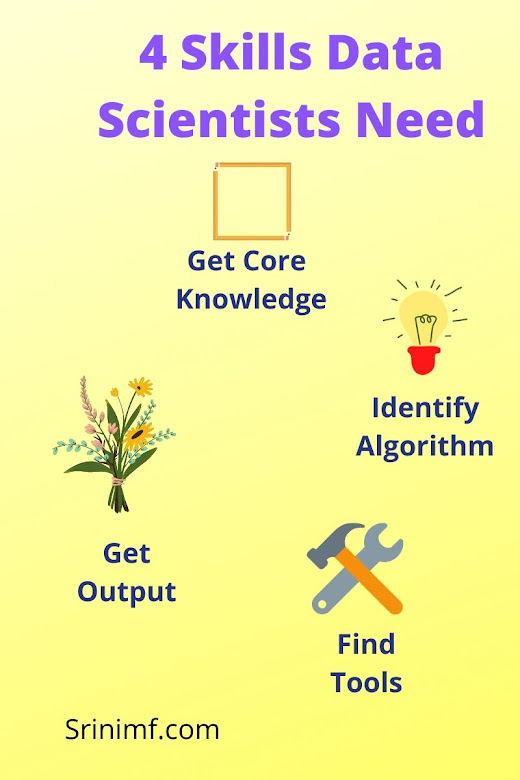Data science is a combination of technical and general skills. As an analyst, you are responsible to provide useful information to the client. Below is a useful list of skills.
Top Data Scientist Skills.
1. Paradigms and practices.
This involves data scientists acquiring a grounding in core concepts of data science, analytics, and data management.
Data scientists should easily grasp the data science life cycle, know their typical roles and responsibilities in every phase, and be able to work in teams and with business domain experts and stakeholders.
Also, they should learn a standard approach for establishing, managing, and operationalizing data science projects in the business.
2. Algorithms and modeling.
Here are the
areas with which data scientists must become familiar:
- linear algebra,
- basic statistics,
- linear and logistic regression,
- data mining,
- predictive modeling,
- cluster analysis,
- association rules,
- market-basket analysis,
- decision trees,
- time-series analysis,
- forecasting, machine learning,
- Bayesian and Monte Carlo Statistics,
- matrix operations,
- sampling,
- text analytics,
- summarization,
- classification,
- primary components analysis,
- experimental design and unsupervised learning-constrained optimization.
3. Tools and platforms
Data scientists should master a basic group of
modeling, development, and visualization tools used on your data science projects, as well as the platforms used for storage, execution, integration, and governance of big data in your organization.
Depending on your environment, and the extent to which data scientists work with both structured and unstructured data, this may involve some combination of :
- data warehousing, Hadoop, stream computing, NoSQL, and other platforms.
- It will probably also entail providing instruction in MapReduce, R, and other new open-source development languages in addition to SPSS, SAS, and any other established tools.
4. Applications and outcomes.
A major imperative for data scientists is to learn the chief business applications of data science in your organization, as well as ways to work best with subject-matter experts:
- In many companies, data science focuses on marketing, customer service, the next-best offer, and other customer-centric applications.
- Often, these applications require that data scientists know how to leverage customer data acquired from structured survey tools, sentiment analysis software, social media monitoring tools, and other sources.
- Plus, every data scientist must understand the key business outcomes—such as maximizing customer lifetime value—that should be the focus of their modeling initiatives.



.jpg)
Comments
Post a Comment
Thanks for your message. We will get back you.